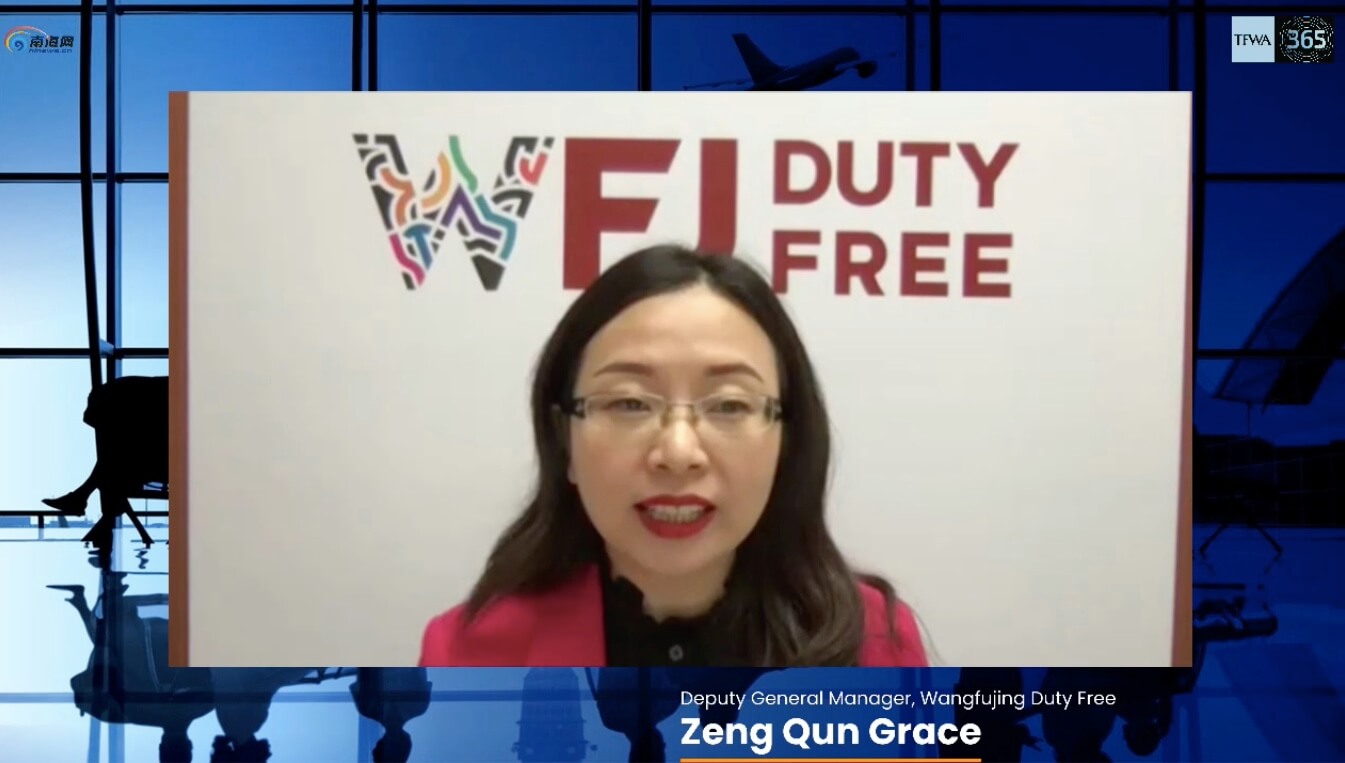China: “The market opportunity is still massive”

“More brands are treating the Chinese market separately and taking a customized approach” - Eudes Fabre, CEO North Asia, Lagardère Travel Retail
Big retail opportunities beckon in China, even amid ongoing pandemic-driven lockdowns and the changing behavior of a new generation of demanding consumers who prefer experiences to products.
That was the key takeaway from Tax Free World Association’s China Watch webinar, titled “New opportunities, new generation” on the TFWA 365 online platform. The speakers explored developments in China travel retail and consumer trends driven by the emerging Generation Z cohort.
Eudes Fabre, CEO North Asia, Lagardère Travel Retail, acknowledged that 2022 would be a “tough” year in China due to the impact on traffic of the localized lockdowns and believes it will take a while for the situation to normalize.
But he remains positive about the long-term future of the Chinese travel retail market, even in Hong Kong, which has been hard hit by the pandemic. The medium-term challenges include the consumer demand for new brands and new categories. Fabre cited sportswear as an example, thanks to the Beijing Olympics. He said that airport retail had become less transactional and was more about experiences – including those not normally found in airports. He also noted the keen interest in high quality local Chinese brands, especially among younger Chinese.
Turning to suppliers, Fabre said that most brands were focused on China and were putting in more resources to understand the Chinese consumer. “More brands are treating the market separately and taking a customized approach.” Lagardère Travel Retail works with brands to take advantage of the specificities of the Chinese travel retail market, which he noted was different from the domestic market.
Building customer connections
To target today’s digital-savvy consumer, Lagardère Travel Retail is developing a “travel-centric, omnichannel approach” to maintain the growth of the business and service the needs of brands who want to build customer connections. He referred to the operator’s joint venture with JD.com, which recently entered into a co-operation agreement with China National Service Corporation (CNSC) to develop e-commerce.
Regarding Hainan, Fabre described the duty free hotspot as “an interesting, pioneering location in omnichannel and digitalization of duty free”. “Hainan is experimental in new approaches to the omnichannel business and customer relationships,” he said, adding that the fundamentals of Hainan’s business would remain strong thanks to these innovations, even when outbound Chinese travel resumes. “The Hainan market opportunity is still massive for international and local brands.” Fabre also observed that customer service was an important focus, particularly as more customers were coming from Tier 1 cities, where expectations of customer service and quality were high.
Another commercial opportunity for travel retailers are high-speed railway stations. As high-speed rail links become popular in China as tourists seek cultural experiences, stations remain a major strategic focus for Lagardère Travel Retail. Already boasting a decade of experience in operating in this sphere, the company is improving the retail offer and introducing new brands. “We’re on the cusp of a revolution in the high-speed railway network,” he enthused.
In a message to brands, Fabre urged them to take risks and explore new business models, citing fresh opportunities on the mainland, such as enabling the Chinese to purchase pre-departure and purchase online overseas. “Experiment with new business models and take bigger risks to make sure we’re part of the future,” he said.

Zeng Qun Grace, Deputy General Manager, Wangfujing Duty Free, describes Gen Z-ers as more global, easily influenced, more demanding, and seeking experiences
Fabre’s comments about the importance of customer service and experiential retail were echoed by Zeng Qun Grace, Deputy General Manager at respected Chinese retailer Wangfujing Duty Free, one of the new entrants to the Chinese travel retail market, which obtained a duty free licence in 2020.
The operator is set to open its first travel retail store in the near future and is embracing Gen Z in China, Qun said, as they make up 19% of China’s population (260 million people) and account for 13% of total household expenditure. Qun described Gen Z-ers as more global, easily influenced, more demanding, and seeking experiences. They are more demanding from brands in terms of features, style and convenience, and like product customization for uniqueness. Social media, such as Little Red Book and TikTok, are among the preferred online platforms for this group, which use them to connect with opinion leaders.
Speaking from Hainan, Jason Cao, of the Duty Free Expert blog, spoke of “Offshore Duty Free 2.0”, as the Hainan market develops. There are now five licence holders with 10 shops on the resort island, and major store expansion is taking place. More local brands are entering the market from China and other parts of Asia, and lots of new brands are being presented “each week”, he said, with pop-ups, events and other activities. He also noted the development of the social media/online sales and marketing channel.
Rocky Chi, Head of Planning at Emerging Communications, a leading agency specializing in China market trends, discussed young Chinese consumers. According to research, and contrary to popular belief, 90% make “considered” purchase decisions and believe that “less is more”, as they would rather spend more on an item to get quality. They do “detailed homework” before a trip and compare prices, and more than 80% adopt the strategy “research online, purchase offline” in duty free shops. Chi also identified the growing popularity of KOCs (key opinion consumers), who are seen as more authentic than KOLs, who are used by brands for professional endorsement and brand awareness.
The webinar audience also heard from Nancy Dai, Market Analyst at travel trends specialist ForwardKeys, who observed that Tier-2 cities are recovering faster in domestic Chinese travel than the Tier 1 hubs. She noted that Hainan is more popular for affluent travelers from Beijing and Shanghai, while Macau is increasingly attractive to couples, who prefer longer stays.










